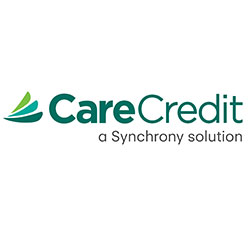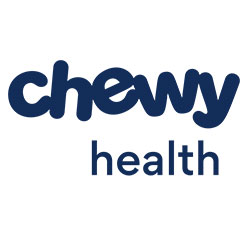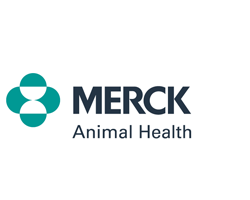Asynchronous vs. Synchronous
Do you want your communications to be asynchronous, synchronous, or both?
- Asynchronous communication, or communication between parties that is not live, may allow practices to be more efficient in managing their schedules by eliminating phone and email tag. It also provides more opportunities for marketing and engagement. Younger generations often prefer asynchronous communication like texting.
- Synchronous communication may be required or be more appropriate for specific services including triage, video patient evaluations, real-time behavior observations, or compassionate quality of life consults for clients with pets receiving hospice care. Older clients may be more comfortable with phone and in-person communication. Some clients and veterinarians prefer live telemedicine evaluations because they feel more like an in-person visit.
- Understanding how these forms of communication differ and what is appropriate in each situation is critical to achieving the goals of your telehealth program. (See Figure 4 for pros and cons of asynchronous and synchronous communication.)
FIGURE 4 | Pros and Cons of Asynchronous and Synchronous Communication
Synchronous or asynchronous communications—or both? Reaching out to your clients requires different approaches and technologies depending on the circumstances. Many factors go into your choice including the urgency and complexity of your interaction, your need for audio or visual evaluation, your available tools and equipment, the demographics of your clients, and the level of interaction required. Pros and cons of each method are shown below.
TIP: Before you purchase any technology, ask for a full capability demonstration.
Asynchronous Communication (text, email, voice messages, etc.)
Pros |
|
|
Delayed reply may allow the veterinarian to gather all information and add clinical context (e.g., data review, consult with specialist). |
|
|
It minimizes interruptions, which may improve individual productivity. |
|
|
Information communicated in another language can be translated through various applications. |
|
|
Information is generally stored and can be readily retrieved for medical record documentation. |
|
|
Photo or video can be retaken to send best image (view, lighting). |
|
|
It gives the ability to record image/video when pet is most clearly displaying clinical signs. |
|
|
It allows transmission of images or large amounts of data for review at a convenient time (e.g. specialist consults; technologies that collect data over time, such as glucose monitors). |
|
Cons |
|
|
Delays in response may translate to delays in evaluation and treatment. |
|
|
It is less personal—if communication is only via text, chat, or email, you miss the opportunity to ask clarifying questions and foster the relationship. |
|
|
It may result in a lack of clear intent (inability to detect facial/vocal cues). |
|
|
If a text, chat, or email is overlooked, it might leave the client with the impression that their message is not important or not urgent. This can lead to gaps in patient care, as well as miscommunication and frustration among the involved parties. |
|
|
The animal owner interprets which images are needed/best, which may not be what is needed by the veterinarian. |
|
|
It does not support use of more interactive remote monitoring technologies. |
|
Synchronous Communication (live two-way audio/video)
Pros |
|
|
It allows more in-depth interaction. Iterative interaction allows efficient exchange of information about the pet and the assessment. It provides the opportunity to acquire details pertinent to care during the session, seek additional information or data, and, potentially, make clinical decisions in real time. |
|
|
It allows for simultaneous, three-way engagement of veterinary specialists, primary veterinarian, and owner. |
|
|
It provides immediacy—real-time access to the veterinarian that supports response to urgent situations, even those that the client may not recognize as urgent. |
|
|
It allows for better clarification of intent (facial/vocal clues). |
|
|
It supports the use of interactive remote monitoring technologies. |
|
|
Audiovisual contact with client/patient may be required for prescribing of controlled substances. |
|
|
It allows for simultaneous engagement of language translators. |
|
|
Photos, videos, and documents can be uploaded by an owner before a scheduled appointment so the veterinarian can review; in some cases, the veterinarian can utilize screenshare to show the client abnormal findings found on images. |
|
|
It better maintains the concept of the veterinarian-client-patient relationship through real-time interaction. |
|
|
Synchronous video allows real-time monitoring of hospital patients. |
|
|
It provides the ability to see an animal’s environment when needed (behavioral assessments). |
|
Cons |
|
|
Poor lighting, noise, and other distractions may impact the quality of communication. |
|
|
Pets may not be immediately cooperative. |
|
|
Video transmission may be affected by internet quality. |
|
|
It may be less amenable to transmission of large-set or longer-term remote monitoring dat |
|
|
Depending on the application used, interaction may not be automatically stored to support documentation for medical records. |
|
|
Integration with your practice management system (PMS) is variable and may have to be done manually. |
|
What do I need to think about when selecting a platform for communicating with my clients?
- Make sure the platform you choose works with everyone’s technology.
- Do you practice in an area with great internet service, or in a rural area with no, low, or inconsistent signal strength? Attempting to integrate live video in an area with limited to no internet service is likely to fail, but text messaging might be possible.
- Check to see if your platform works on all operating systems.
- Some platforms are app-based only while others provide both downloadable content and applications for desktop use. Test usability on mobile phones and tablets. Make sure applications are compatible with Microsoft, Android, and Apple products. Downloading an application may be a barrier to use for some less tech-savvy clients.
- Does the platform integrate with my practice management system (PMS), and what are the pros and cons of that?
- Platforms that are compatible with your PMS can make you more efficient and usually provide a better experience for both the client and the practice team, but they are typically more expensive.
- Platforms that integrate with your PMS may not adopt new features as quickly as those that do not.
- When choosing a platform, ask if you can speak with current customers about their experiences.
How do I charge the client?
- If you are using Zoom or FaceTime, you’ll need to find a separate payment provider, or your customer service representative can collect payment prior to or immediately following the appointment.
- Many telehealth platforms have built-in payment systems, allowing you to automatically charge your client before or after the consultation, set pricing for different appointment types, apply coupon codes, or charge by time. Some platforms may integrate more easily than others with your PMS.
- If you are planning to offer services that include AI-assisted diagnostic services, ask the providers if they charge extra for that service or if it is included with the routine services you already receive from them.
- If you are incorporating wearable remote monitoring devices into patient monitoring programs, you’ll need to consider whether your fees for analyzing the patient data can be captured within existing service fees or if a separate fee makes sense for how you manage this at your practice.
How will the third-party provider charge?
- Some platforms charge per use, per doctor, per month, or a combination. Make sure you ask about fees and ensure there are no unexpected charges.
- There may be fees for both the platform vendor and for the credit card processor, so make sure you understand what you will be billed for each visit.
- You can expect higher costs for platforms that communicate directly with your PMS.







